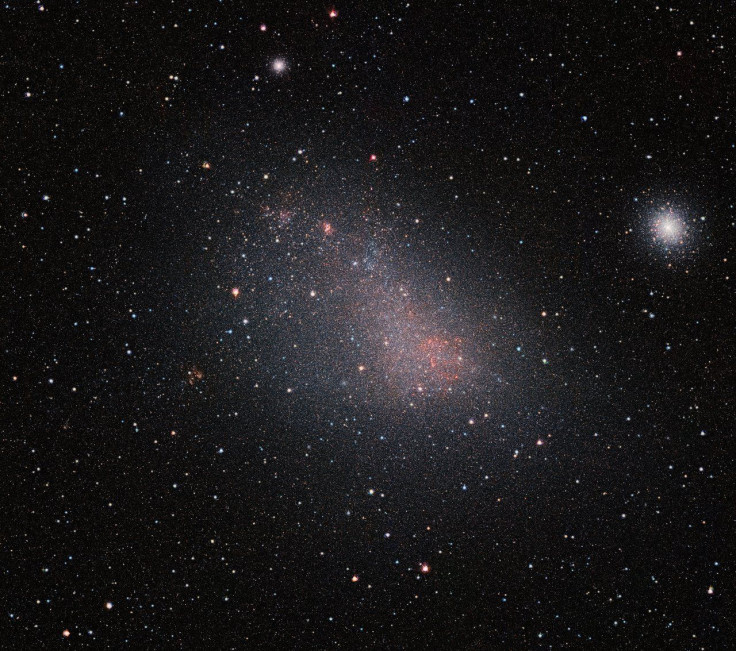Most Stars In Small Magellanic Cloud Formed Relatively Recently, ESO’s VISTA Survey Finds

The Small Magellanic Cloud (SMC) is one of the closest galaxy neighbors the Milky Way has, and is a part of the Local Group. Its distance of merely about 200,000 light-years makes it a good candidate for studying the formation and evolution of stars, but efforts in that direction are usually thwarted by the presence of interstellar dust which scatter and absorb some of the radiation coming from stars, thus obfuscating the view of telescopes on Earth.
To get around this problem, astronomers from the European Southern Observatory (ESO) used the 4.1-meter Visible and Infrared Survey Telescope (VISTA) at the Paranal Observatory in Chile to look at infrared radiation from the SMC, which is full of dust. The interstellar dust obstructs infrared light a lot less than visible light, and looking at it can therefore offer insights into the formation of stars within clouds of gas and dust.
A wide-field image released Wednesday by ESO shows millions of stars in the SMC. Analysis of the massive image by an international team, led by Stefano Rubele of the University of Padova in Italy, found that most stars in the SMC formed a lot more recently, compared with other larger galaxies nearby.
Read: Explosive Star Formation Caught On Camera
ESO also released a zoomable version of the image that shows unprecedented detail of the SMC. It was created as a part of the VISTA Survey of the Magellanic Clouds (VMC), which “is focused on mapping the star formation history of the SMC and LMC [Large Magellanic Cloud], as well as mapping their three-dimensional structures. Millions of SMC stars have been imaged in the infrared thanks to the VMC, providing an unparalleled view almost unaffected by dust extinction,” according to a statement by ESO.
The image also shows thousands of background galaxies and star clusters, including 47 Tucanae which is the large bright object at the right of the image. 47 Tucanae is a globular cluster about 16,700 light-years away from Earth and measures 120 light-years across. The star cluster may be home to an intermediate-mass black hole, which scientists recently provided indirect evidence for.
The SMC and its bigger companion, the LMC, are two dwarf galaxies that are irregularly shaped due to the gravitational effects of each other and of the Milky Way. LMC lies about 163,000 light-years away and is 14,000 light-years across. After Andromeda, Milky Way and Triangulum, it is also the fourth-largest galaxy in the Local Group. Both SMC and LMC are visible to the naked eye from the Southern Hemisphere.
Read: Star Formation Was More Rapid In Early Universe Than Previously Thought
The research and analysis based on the image captured as part of VMC were published Wednesday in the Monthly Notices of the Royal Astronomical Society. Titled “The VMC survey - XIV. First results on the look-back time star formation rate tomography of the Small Magellanic Cloud,” the paper can also be found on ESO’s website.
More photographs from the VISTA project can also be found on ESO’s website using this link.
© Copyright IBTimes 2024. All rights reserved.











